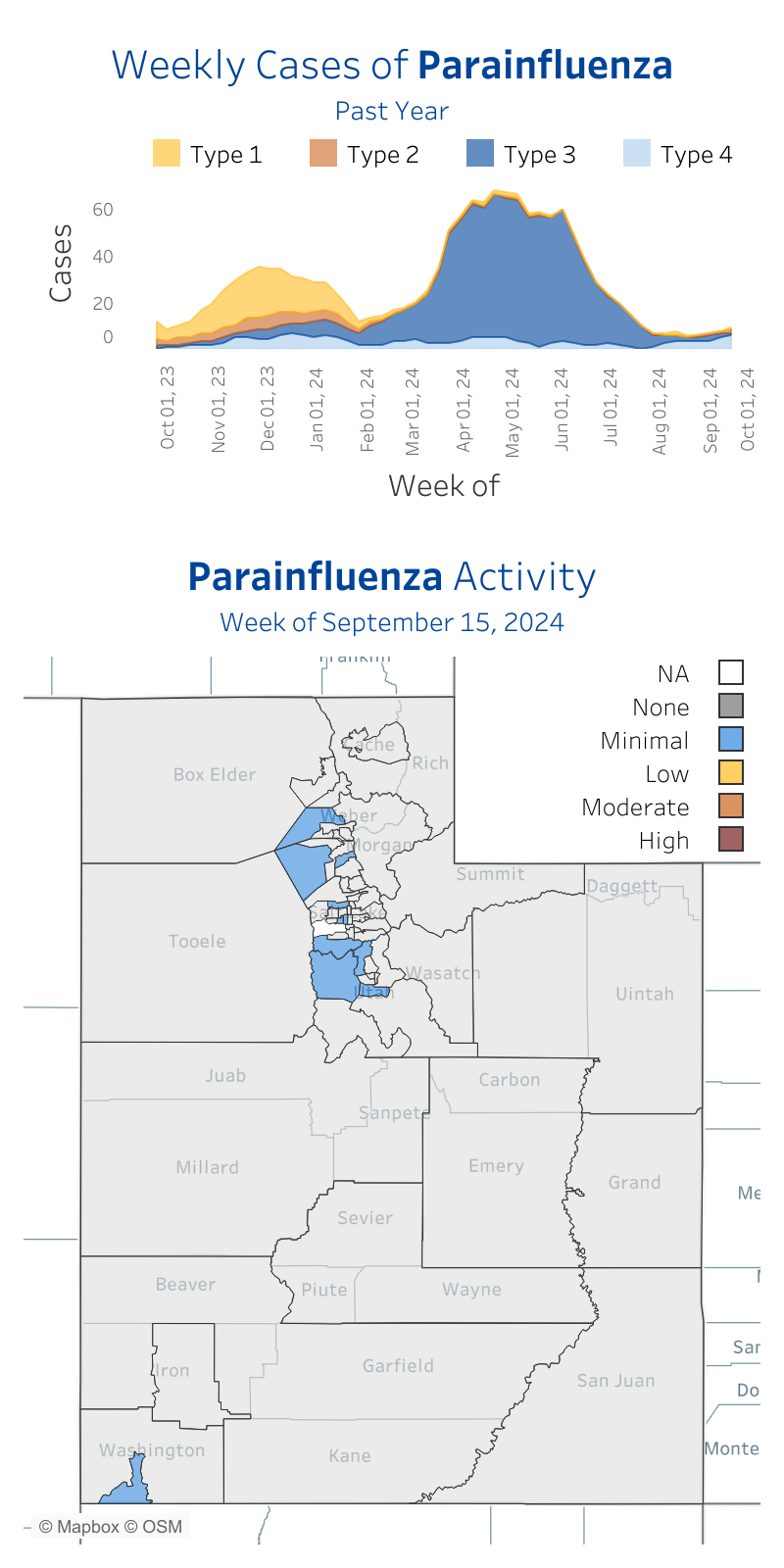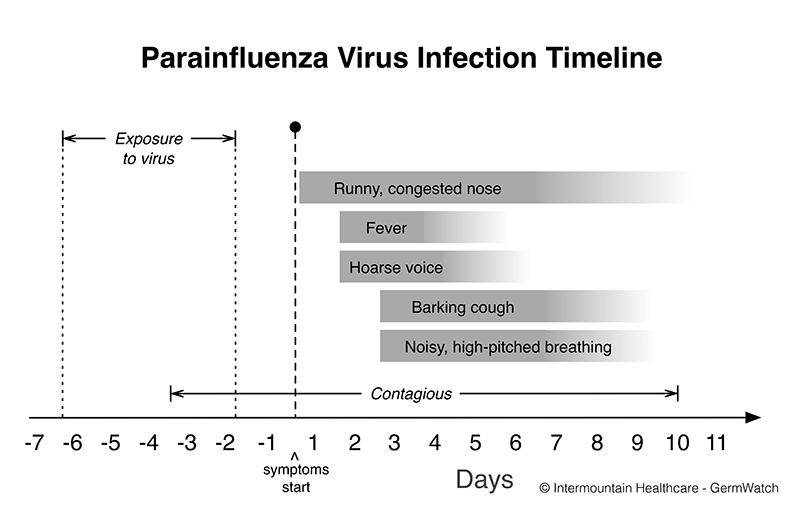Germ Profile
Also Known As: PIV; Paraflu; croup virus
Germ Type: Virus
Season: Winter, spring, summer, fall
Parainfluenza (PIV) refers to a group of 4 common viruses. Most illness is mild, requires no treatment, and goes away on its own. However, PIV is also one of the most common causes of croup. (Croup is airway inflammation that causes a strange, barking cough.) Babies and young children are more likely than older children to develop croup, bronchiolitis, or another serious illness from PIV.
Seasonality
Different PIV are active at different times of the year. As a result, there’s usually at least one type of parainfluenza circulating.

Signs and Symptoms
PIV symptoms can vary depending on the virus and the victim. The most common symptoms are runny or stuffy nose, cough, chest congestion, cough-related chest pain, sore throat, fever, and breathing problems. The severity of illness ranges from very mild to life-threatening.
Infection Period
Symptoms of PIV infection typically develop between 2 and 6 days after being exposed to (or infected with) the virus. The first symptoms are runny nose and nasal congestion, followed quickly by fever and hoarse voice. Croup symptoms (barking cough and noisy breathing), if they develop, usually appear by days 2 and 3. People infected with PIV are usually contagious for 3 to 16 days.

How It's Spread
PIV is spread by direct contact with an infected person’s saliva or nasal secretions (usually sprayed out in tiny droplets from a cough or sneeze). The virus can also live on surfaces and materials (tables, handrails, doorknobs, toys, furniture). If you get coughed on or touch a contaminated surface – and then touch your eyes, nose, or mouth – you can get infected.
Diagnosis and Treatment
Most of the time, a healthcare provider can diagnose parainfluenza by based on the symptoms and physical exam. If symptoms are very severe, a provider may want to test a sample from a nose or throat swab or get an x-ray of the chest or neck. As with many other viruses, treatment for PIV usually means managing the symptoms until the infection clears. (There’s no commonly used treatment that acts on this group of viruses.) However, croup or other complications of parainfluenza infection may require medication and monitoring.
What can I do today?
1) Practice prevention and stop the spread:
- Wash your hands often and well, and have children do the same.
- Disinfect tables, toys, counters, and other surfaces regularly.
- Cover your sneezes and coughs.
- Use a tissue once, then throw it away and wash your hands.
2) Pay attention:
- When parainfluenza is going around, pay attention to any symptoms your child may have. Parainfluenza usually causes only cold-like symptoms that go away on their own – but be on the lookout for breathing problems.
2) Call your child’s doctor if you notice:
- A harsh, barking cough (like a seal) that may signal croup.
- Wheezing (a whistling sound when breathing in or out).
- Fast breathing (more than 40 times a minute) or very difficult breathing (retractions, or using the stomach muscles when breathing).
- Signs of dehydration (dry mouth and eyes, little urine, low energy) Fever higher than 100.2°F in an infant 3 months or younger.
- Fever lasting longer than 3 days Any severe symptoms or symptoms that last longer than 7 days.
Disclaimer: The contents of this website are not intended to be a substitute for professional medical advice, diagnosis, or treatment.